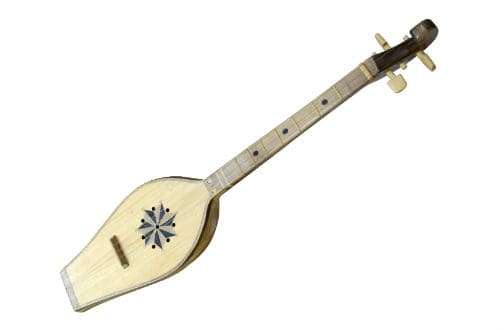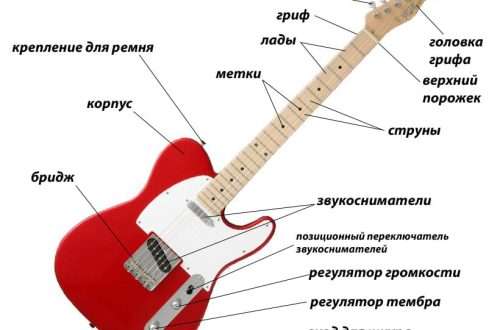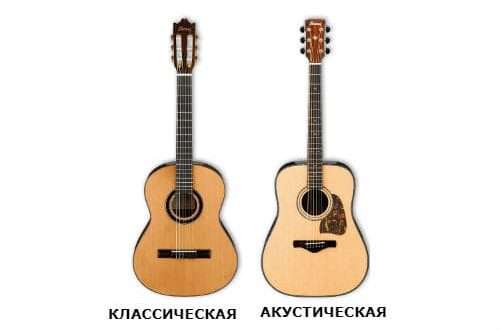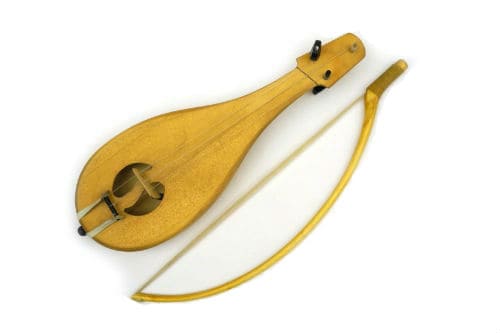
Beep: instrument composition, sound, history, use, playing technique
In Russia, not a single folk festival was complete without songs and dances. The favorites of the audience were buffoons, who not only made onlookers laugh, but also sang well, accompanying themselves on the whistle. Outwardly primitive, stringed bowed musical instrument is widely reflected in oral folk poetry.
How the tool works
The pear-shaped or oval-shaped body smoothly transitions into a short, fretless neck. The deck is flat with one or two resonator holes. The neck holds three or four strings. In Russia, they were made from animal veins or hemp rope.
A bow was used to produce sound. Its shape resembled a archer’s bow. The ancient folk instrument was made entirely of wood. Most often it was a solid fragment, from which the inner part was hollowed out. There are instances with a glued case. The deck of the horn is straight, flat. Size from 30 centimeters to one meter.

What does the horn sound like
Musicologists-historians often compare the Russian folk instrument with the violin, finding family ties between them. The sound of the beep is nasal, creaky, importunate, indeed reminiscent of the sound of a modern academic violin.
History
Scientists have found the very first mention of the Old Russian chordophone in documents of the XNUMXth century. During excavations in the Pskov and Novgorod regions, various specimens were found, which at first misled archaeologists and historians. It was not clear exactly how the musicians played the ancient find, to which group of instruments the whistle belonged.
Initially, it was believed that an analogue of the harp was found. Turning to the ancient chronicles, scientists were able to see what the instrument could have looked like, and were able to determine that the beep belongs to the bowed string group. Its other name is smyk.
More ancient analogues were used in Ancient Greece – lyre and in Europe – fidel. This makes it possible to assume that the beep is borrowed from other peoples, and is not actually a Russian invention. Smyk was a tool for the common people, it was actively used by buffoons, and horns were the main characters at all festivities, celebrations, street theatrical performances.
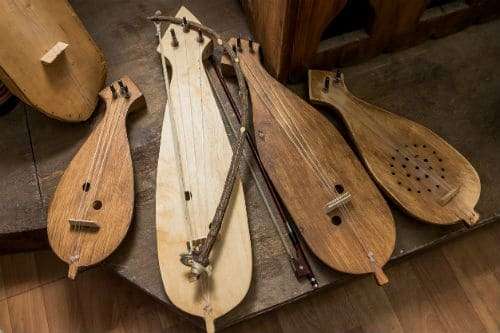
The Russian Orthodox Church had a negative attitude towards this instrument. It was believed that the grimacing of buffoons to the sounds of the close was sinful and caused by demons. In the Moscow Kremlin there was a special building called the Amusement Chamber. There were hooters who amused the royal court and the boyars.
In the XNUMXth century, aristocratic representatives of the string family found wide use; by the end of the century, not a single horn player remained in the country. Currently, the horn can only be seen in museums of folk instruments. The oldest specimen was found during excavations in the Novgorod region and dates back to the XNUMXth century. Russian craftsmen regularly attempt to reconstruct the smyk using ancient chronicles.
Play technique
Only one string was used to extract the main sound melody. Therefore, in the most ancient specimens, the rest were absent altogether. Later, additional bourdons appeared, which, when the musician began to play, hummed non-stop. Hence the name of the instrument.
During the Play, the performer rested the lower part of the body on his knee, directing the horn vertically with his head up, and worked horizontally with the bow.
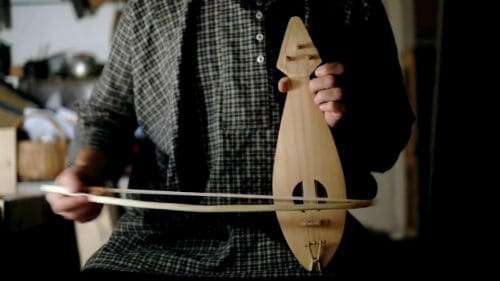
Using
The amusement of the common people is the main direction of using the whistle in the history of Russia. Smyk sounded during the festivities, could be used solo, in an ensemble with other instruments, for the accompaniment of comic songs, folklore. The Gudoshnikovs’ repertoire included exclusively folk songs and music composed by themselves.
For the last 50-80 years, local historians and historians have been trying to find at least one hooter in rural settlements, but not a single one has been found so far. This suggests that the old Russian smyk has completely lost its significance in the musical culture of the people, opening the way for the noble academic violin. In modern use, it can only be seen in historical reconstructions, films with ethnic themes.



